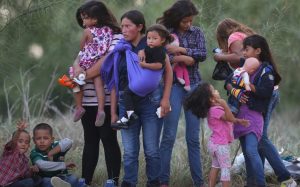By Janett Chavarry Garcia

PERU: In Perú right now, we’re experiencing a particularly cold winter. It’s perhaps the strongest one we’ve had in years. Somehow, we should have seen that as an omen as to what was to come.
Because on August 15, our corner of the world changed.
It was a strange sunny afternoon that shone on a cold Lima on that fateful day. I was in a shopping center buying a sweater with my mother. This shopping center is in Lima’s centre square.
At 6:41 p.m., the earth shook and what was to follow will forever be etched into the memory of all Peruvians.
As the store swayed back and forth, all the people that were shopping with me became nervous and anxious. My sister was supposed to join us. She was coming from home, and as the earthquake continued my first thoughts were of her.
After the first minute passed, I thought the danger was over. Then a second earthquake started and the whole building shook all over again. People started running, shouting — and jumping from the second floor of the store. Fortunately, we could leave safely and without getting hurt.
Three minutes, three long minutes is all the time the second earthquake lasted but it seems more like it should have been endless hours because of all the destruction and loss of life that it caused.
When I finally got over my shock, I thanked God for my life and prayed that other people didn’t die. I looked around and people were fainting, women and children crying, people who didn’t even know me were asking me to find their lost relatives.
Telephones weren’t working and people were desperate to know something about their families.
I could see broken glass everywhere and I had the sense that this was not a typical earthquake to which we Peruvians are accustomed.
My family and I started walking along the sidewalk and by then hundreds of people had made their way outside — everyone trying to desperately flag down a taxi.
We made our way to a restaurant where I saw on TV that the earthquake had an intensity of 8.0 on the Richter scale. It was Peru’s strongest earthquake since 1974.
We decided to leave the restaurant and go home. During our journey, we experienced more earthquakes. Though they did not last long, I could only imagine the extent of the worsening catastrophe.

Lima city street
After two hours, we finally arrived home. The building where I have lived since I was born suffered damages on the walls and columns but thank God nobody died.
We didn’t have electricity or telephone service for more than ten hours. On the radio, we heard the tragic news reporting the death of 500 people in the south of Perú, exactly in Pisco, Cañete, Huancavelica, Chincha.

Peruvian building suffers catastrophic destruction
These places are surrounded by beautiful beaches and have great and ancient traditions. I know these places. My family and I have visited these cities.
The radio also reported on the loss of houses, churches, prisons, hospitals and roads. Just imagining the children who had died and the complete destruction in these towns was too painful to hear.
During all that first night and for the next two days, we experienced 400 short earthquakes — they go on until this day.
Every minute since the earthquake, we have been consumed with the sadness of the destruction and the fear that it will happen again.
So far, 510 of the dead have been identified. More than 2000 people were injured and 80,000 people have suffered some kind of damage to their homes. Too many of them have been left without water and electricity since the day of the earthquake.
The death and destruction has not been easy to understand. Yet, in the middle of the chaos, the response of all Peruvians has been incredible. Not to mention, the government and foreign countries that organized campaigns to help us — for all their help, I will always be grateful.

Father holding child stands outside his destroyed home.
All people, without prejudices for races and economical position are sending donations, money, food and water to our brothers — because today all Peru is united as a family — brothers and sisters that need help.
Personally, I still feel nervous and worried about the future of these people and their families. Yet in spite of this tragedy, I’ve discovered there exists a solidarity and a big capacity to help one another.
It’s true my country hasn’t been organized in responding to the catastrophe and it’s a point to reflect on, but it’s also true that God is with us and we have the hope that we will continue our long road ahead with perseverance and optimism.
These are two qualities that can always be recognized in Peruvian people, and ones that will carry us all far into the future.
To see more photos of the catastrophe, please go to El Comercio and Radio Programas del Peru.
Learn more about Janett:
Janett Chávarry GarcÃa was born in Lima, Peru in 1977. It is where she still lives with her parents and three sisters in the same apartment near the city’s town square.
Janett has a degree in Communications from Lima University. These days, Janett studies the development of communications and mass media as it pertains to social issues.
As such, she has worked in human resources, television and has participated in public enterprise projects.
When Janett is not writing for Latina Lista, she loves to spend her free time either curled up with a good book of fiction and her dogs or working in a little exercise by playing volleyball or cycling around Lima.





Comment(1)
Giovanna
I think is an excellent article!
I hope we could help peruvians.